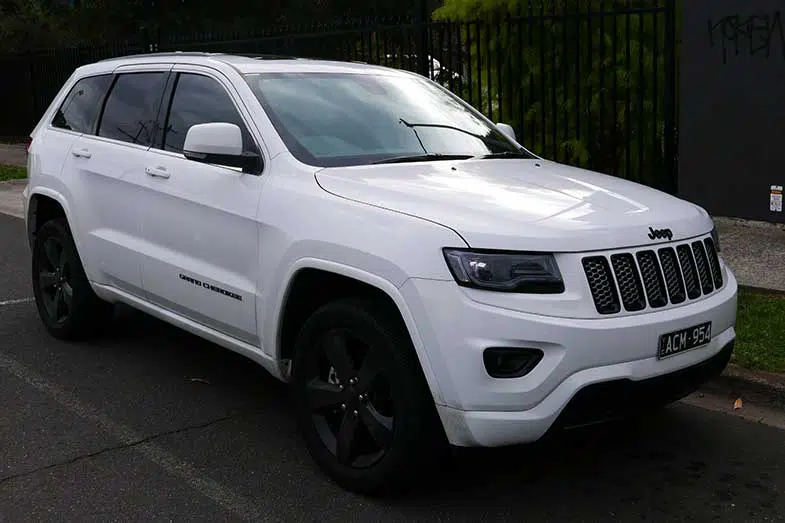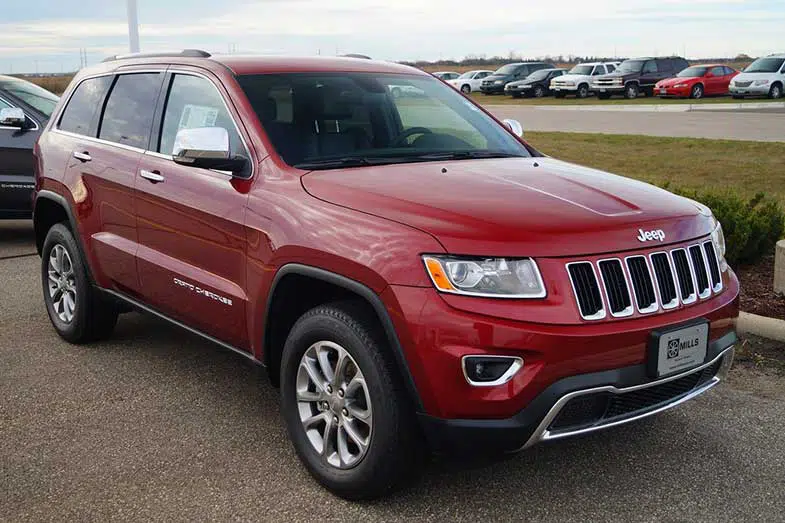A second-hand car is a great option if you have a limited budget, are adding a unit to your collection, or need another vehicle to use for specific purposes. The Jeep Grand Cherokee is a reliable five-passenger unit that you can use as a family, commuter, or off-road vehicle. However, since it has been around for more than two decades, you can find many year models, and you need to avoid purchasing some of them.
So which Jeep Grand Cherokee years should you avoid? As similar to any products you buy, you should avoid Jeep Grand Cherokee year models with lots of customer complaints, repair issues, and costly maintenance. As per data collected, the worst Grand Cherokees to purchase are models 2011, 2014, and 2015.
Although you’re already familiar with the three different year models of the Grand Cherokee that you should cross out from your list, it’s always best to understand why they have bad reputations. In this way, if you still plan to purchase any of them, you would know what to expect and how to maintain it properly or what parts to maintain more frequently than the rest. It’s also worth knowing which Jeep Grand Cherokee models are the best in the market so that you can decide easily.
Jeep Grand Cherokee Years to Avoid
Based on data from several third-party websites, such as CarComplaints and Consumer Reports, car forums or discussions, and auto-mechanics or auto shops, here are the main issues and complaints about each of the three worst Jeep Grand Cherokee models, as well as the main reasons for some model recalls:
2011
The 2011 Jeep Grand Cherokee is the first model of the fourth generation series, which could explain why it has the most reported complaints. Generally speaking, a pioneer model will always have a new feature to make it different from the rest of the former generations. Although the newly introduced car part had undergone standard testing, it didn’t have the luxury of time for actual consumer testing and additional development or improvement.

There were many reported electrical, engine, and interior accessory problems with the 2011 model, but the main issue was the new TIPM or Totally Integrated Power Module. In fact, owners filed a class-action lawsuit against the manufacturer due to the widespread TIPM problem, which was usually experienced at 51,700 miles and cost the owners almost $2,000.
With the TIPM malfunctioning, the 2011 Jeep Grand Cherokee failed to start, or the user had a hard time getting the car started. Other issues involved the vehicle’s fuel system, suspension, brakes, and transmission.
Recalls
With the number of problems encountered, the 2011 Jeep Grand Cherokee was recalled six times. Here are the main reasons for each:
- Brake Booster Shield (April 2014 and September 2017): The center brake booster shield was prone to corrosion. Once corroded, it allowed water to enter that will then freeze, leading to limited braking efficiency.
- Wiring (July 2014 and December 2015): The main issue was a short circuit on the sun visor’s vanity lamp wiring system, which increased fire risk.
- TIPM (September 2014 and November 2019): There was a possible failure of the TIPM’s fuel pump relay that made the Grand Cherokee stall without warning, increasing the risk for a crash.
2014
As a later model of the fourth generation, the 2014 Grand Cherokee underwent improvements such as a more powerful engine, better electrical system, and a more luxurious and comfortable interior. Still, there were several complaints about the unit’s engine, interior accessories, and brakes.

The main problem with the 2014 Grand Cherokee is its transmission, specifically rough or jerky gear shifting. There were even injuries related to the unsuccessful shifting from drive to park, causing the vehicle to roll even when the engine was off.
However, some experts said that this might be more of a user error since the vehicle has an alarm that will make a sound to warn the driver that it isn’t in park mode or if the shift was unsuccessful.
One of the upgrades done to the 2014 Grand Cherokee was the transition from a conventional lever gear shifter to an electronic one. As such, some users might haven’t gotten used to the gear shifter yet, making it difficult for them to shift and know if they’ve successfully shifted the gear.
Recalls
With this Grand Cherokee model, NHTSA issued 12 recalls. The main problems were the following:
- Brake Booster Shield (March 2014 and September 2017): The center brake booster shield was prone to corrosion. Once corroded, it allowed water to enter that will then freeze, leading to limited braking efficiency.
- Speed Control (June 2014): There was a potential continuous vehicle acceleration even when the driver releases the accelerator pedal, which poses a danger to the driver, passenger, and people around.
- Airbags (October 2014): Disabled front and side airbags due to a faulty Occupant Restraint Control (OCR) module. Some also reported problems with the failure of the malfunction indicator light or MIL to illuminate.
- Electronic Stability Control / ESC (October 2014): There was a potential disabling of the ESC due to Steering Column Control Module (SCCM) software issues. That prevented the driver from adequately controlling the vehicle, which increased the risk of a crash.
- An alternator (October 2014 and July and November 2017): A sudden alternator failure caused the car’s stalling without any warnings. This situation also increased the risk of a crash.
- Electronics (July 2015): Units with radios had software vulnerability issues. Thus, it could have caused unauthorized, third-party access to and modification and control of some of the vehicle’s control systems.
- Automatic Transmission (April 2016): There was difficulty moving and locking the gear to park mode.
- Engine (October 2017): There was brake fluid leakage, consuming the brake fluid faster than usual. As such, the driver needed to step on the brake earlier than usual.
- Wiring System (May 2018): The model had short circuit issues that prevented the driver from shutting off the cruise control, so the car either maintained its speed or accelerated.
2015
The 2015 Jeep Grand Cherokee might not have been the best year for the manufacturer since it’s also the model listed as one of Jeep Cherokee years to avoid. Although there were lesser brake and engine problems regarding the 2015 Grand Cherokee, it had similar transmission problems as the 2014 model. That is quite disappointing since the issues should’ve been resolved through improvements.

The number one on the list is unreliable shifting, usually experienced when the mileage reached around 12,000, on average, which cost users about 7,500 USD. The next issues were poor transmission performance at around 6,100 miles and improper shifting at 7,150 miles.
Recalls
As per recalls, there were a total of six for the 2015 Grand Cherokee. That is because of the issues in the unit’s:
- Rear Suspension (July 2015): Some of the units might have had rear suspensions with lower control arms, leading to “fracture” that affected rear-end stability, ride height, and brake efficiency.
- Electronics (July 2015): Units with radios had software vulnerability issues. Thus, it could have caused unauthorized, third-party access to and modification and control of some of the vehicle’s control systems.
- Hydraulics or Service Brake (March 2016): In addition to the brake fluid leakage issue, some units had problems with the brake caliper breaking easily. Thus, there was also a higher crash risk since the driver needed to step on the brake earlier than usual to stop at the right distance.
- Automatic Transmission (April 2016): There was a difficulty in moving and locking the gear to park mode.
- Engine (October 2017): Brake fluid leakage issues that required the driver to step on the brake earlier than usual.
- Wiring System (May 2018): Short circuit that prevented the driver from shutting off the cruise control, so the car either maintained its speed or accelerated.
What Year of Jeep Grand Cherokee Is the Best?
In terms of versatility and reliability, most Jeep enthusiasts suggest that the best Grand Cherokee models are the old ones. Of course, you should also weigh other factors when opting for older models, even if they’re included in the best list.
On that note, for the ’90s models, most experts recommend the 1998 and 1999 models because of the various improvements that made them faster and better for off-road driving. For the 2000s, the 2005 model would be the best choice because of its excellent on-road and off-road capabilities. Additionally, the engine design ensures that there’s a balance between performance and fuel economy.
Lastly, for the newer models, 2017 and 2018 Jeep Grand Cherokees top the list of highly recommended units. Of course, they have tons of more modern features and aesthetically-pleasing leather seats that will give you a more comfortable and luxurious ride.
Nonetheless, you can upgrade older models by simply purchasing leather seat covers or installing modern technology equipment like a quality audio, navigation system with a rear camera (view on Amazon).
Jeep Grand Cherokee Years to Avoid: The Takeaways
Although they’re not fault-free, data and reviews show that some of the oldest models of the Jeep Grand Cherokee have the lowest customer complaints. That doesn’t mean, though, you should avoid newer models since they have features suited for this time and age, like a more economical, eco-friendly engine.
Model recalls are also not uncommon since no design is perfect, but it’s always best to consider the reasons for the recalls to ensure your safety. Also, when purchasing second-hand units, you must look at how well the unit has been maintained. Focusing too much on year model and mileage is one of the most common mistakes of buyers.
That said, it’s best to stir away from the first models of a particular Grand Cherokee generation, such as the 2011 unit, because it will always be a new version of the previous one. Thus, it has been equipped with newly designed features.
It also implies that it is best to avoid a year model in a generation, such as the 2014 Grand Cherokee, that has a new feature that replaced an old, tested one. It’s not to say that changes make those vehicles less reliable, but these new features will always need years of actual road testing.
Overall, in terms of the Grand Cherokee, the 2014 and 2015 models would be the worst units to purchase. Not only because of the number of safety issues but also because their repair cost is higher than the 2011 model. Likewise, the problems occur very early or when the mileage is still low. On the other hand, although the 2011 Jeep Grand Cherokee received more complaints than the 2014 and 2015 models, the repair cost isn’t as high. Also, the main issue was usually related to the user’s fault.
Kris is an avid off-roader and outdoor enthusiast who loves to brave the elements and take on challenging terrain. He also enjoys sharing his passion and knowledge with others so that they, too, can appreciate the ride.
About Kris
